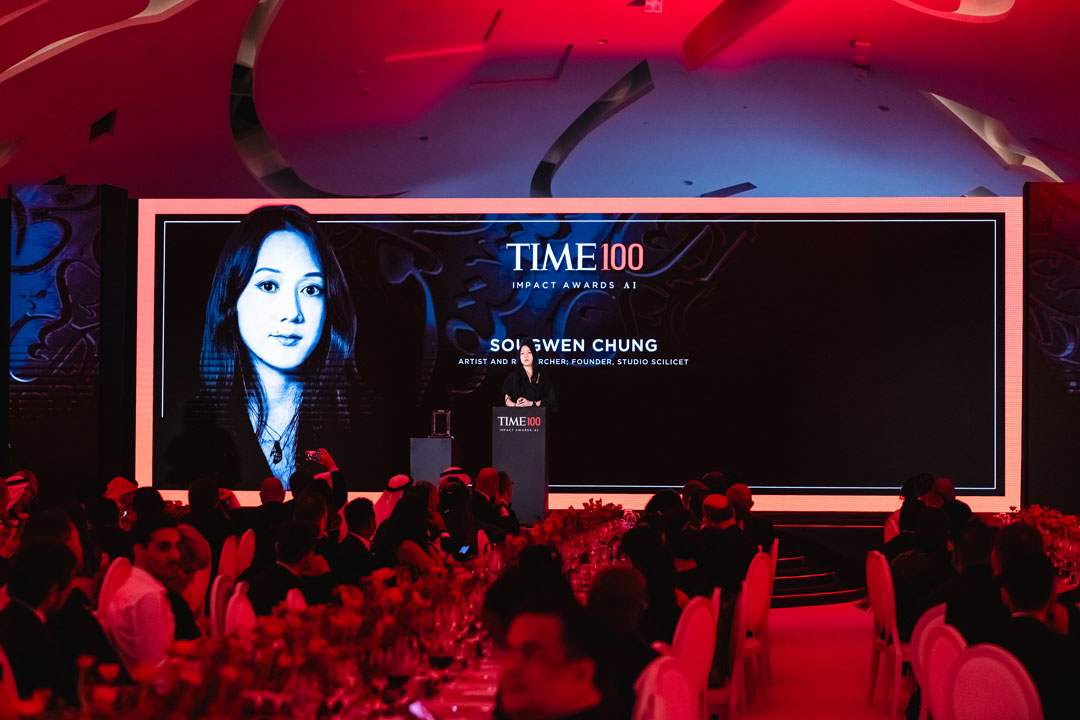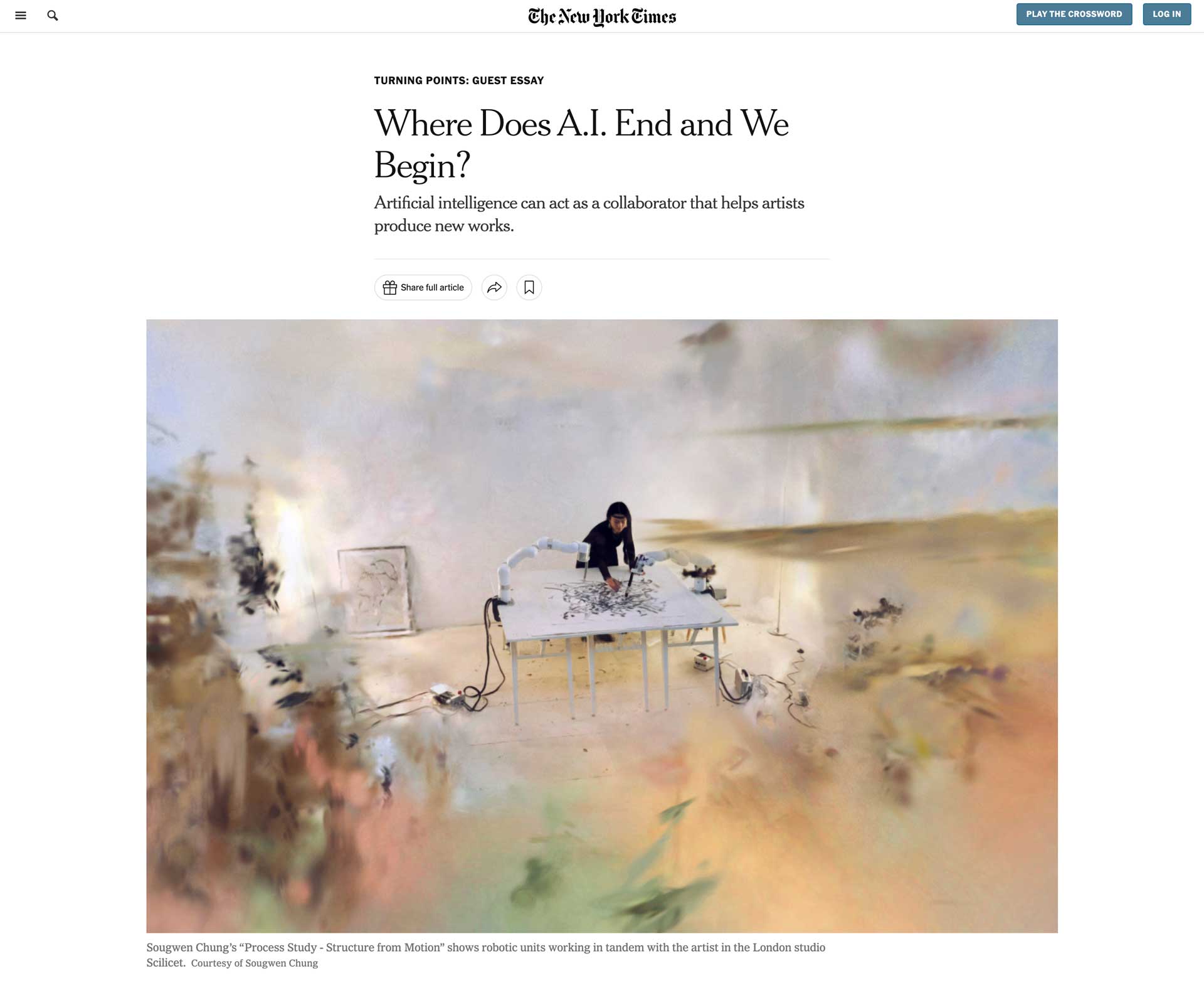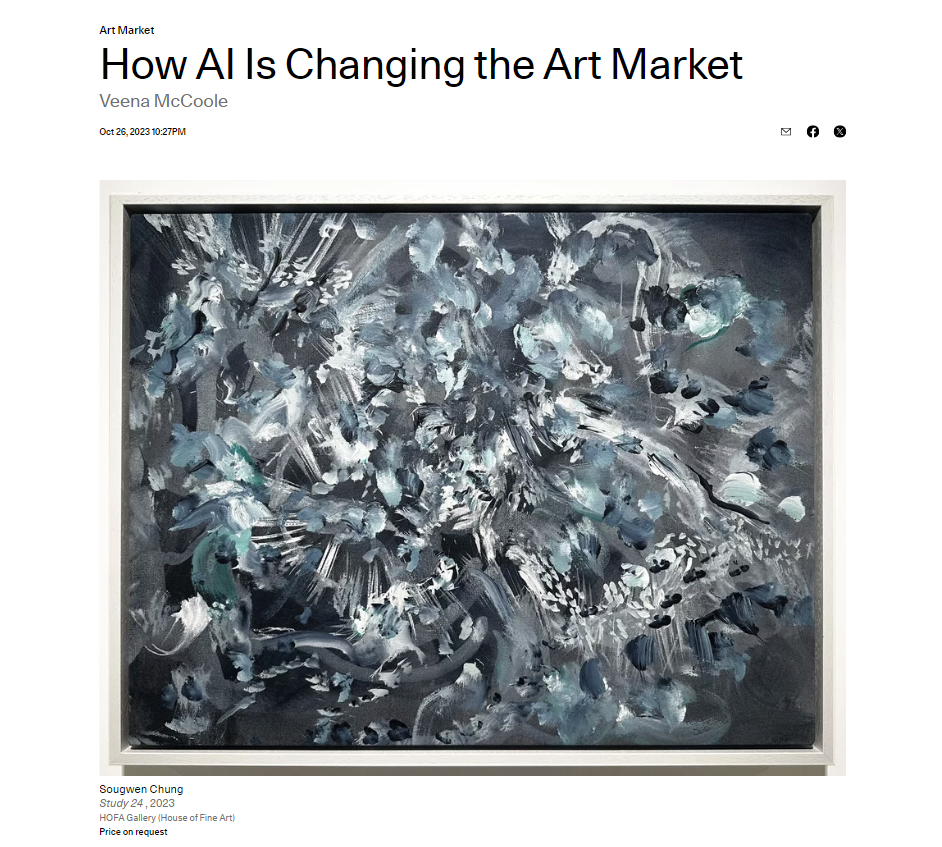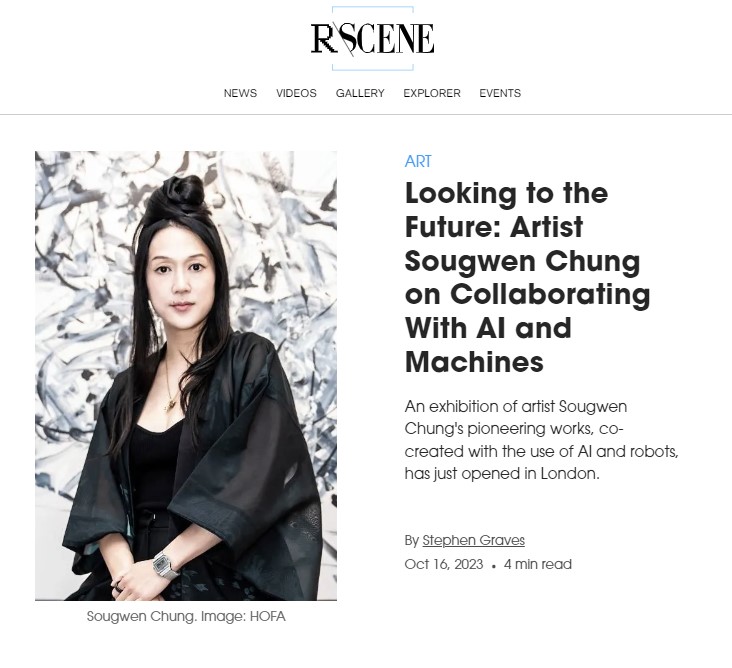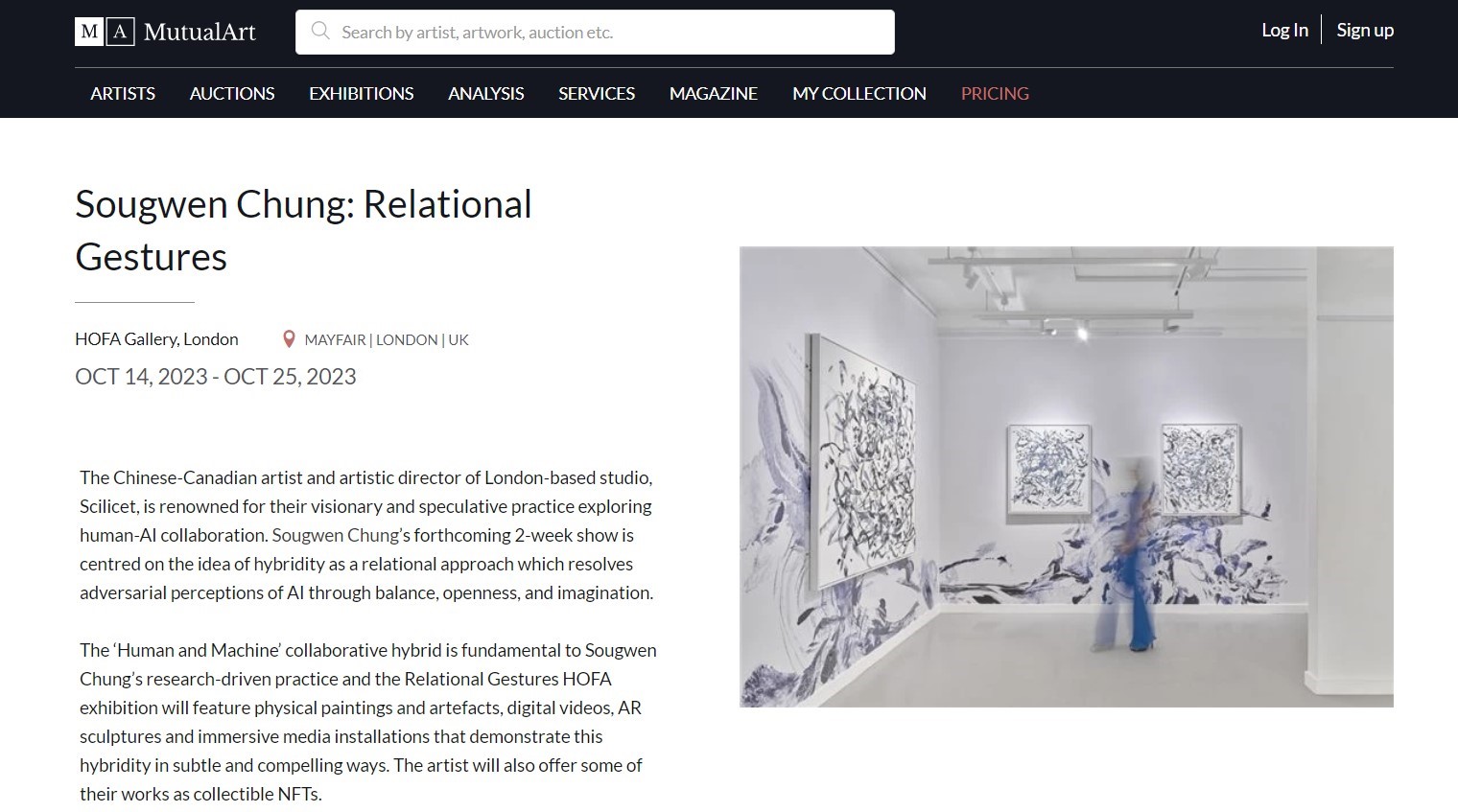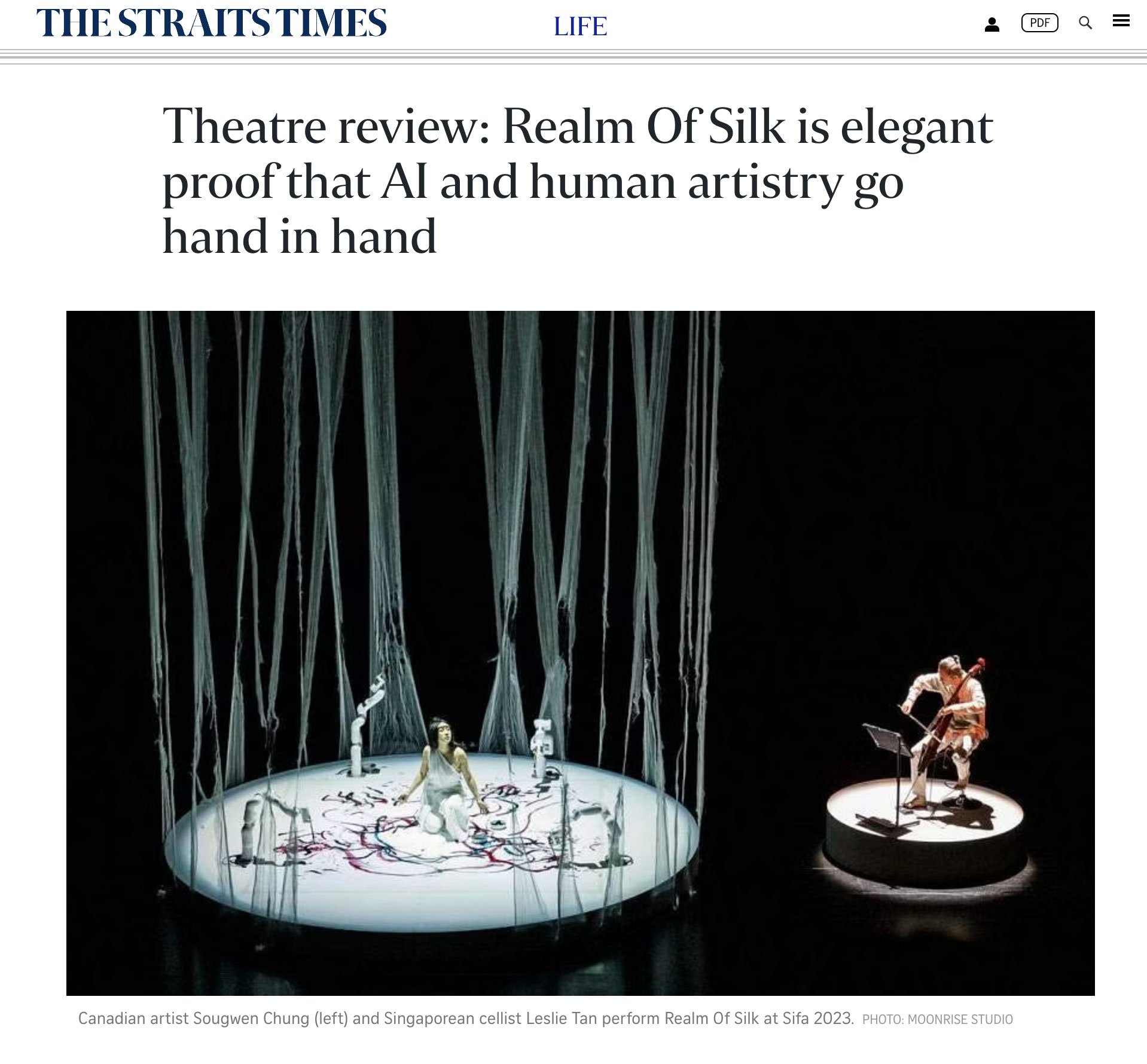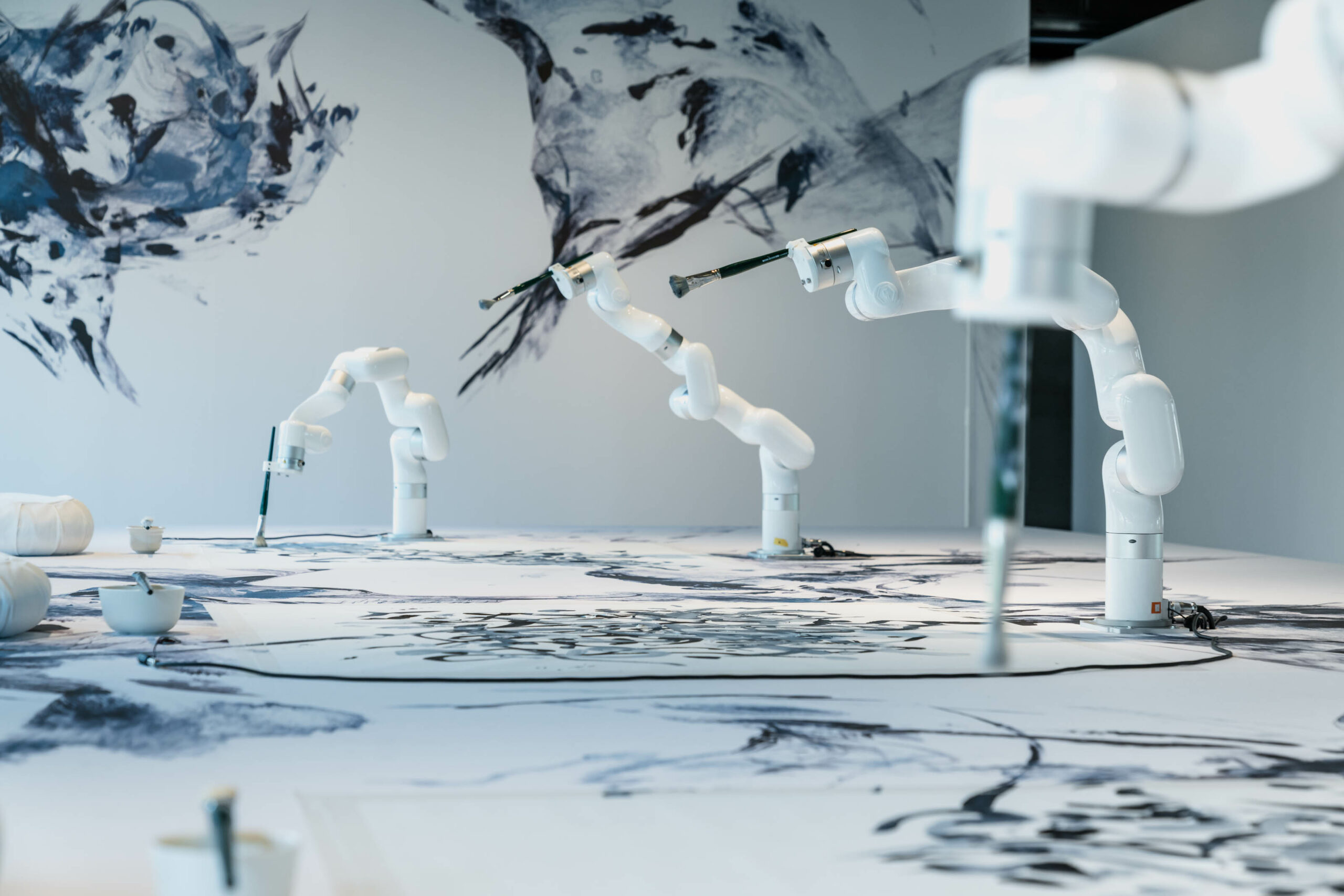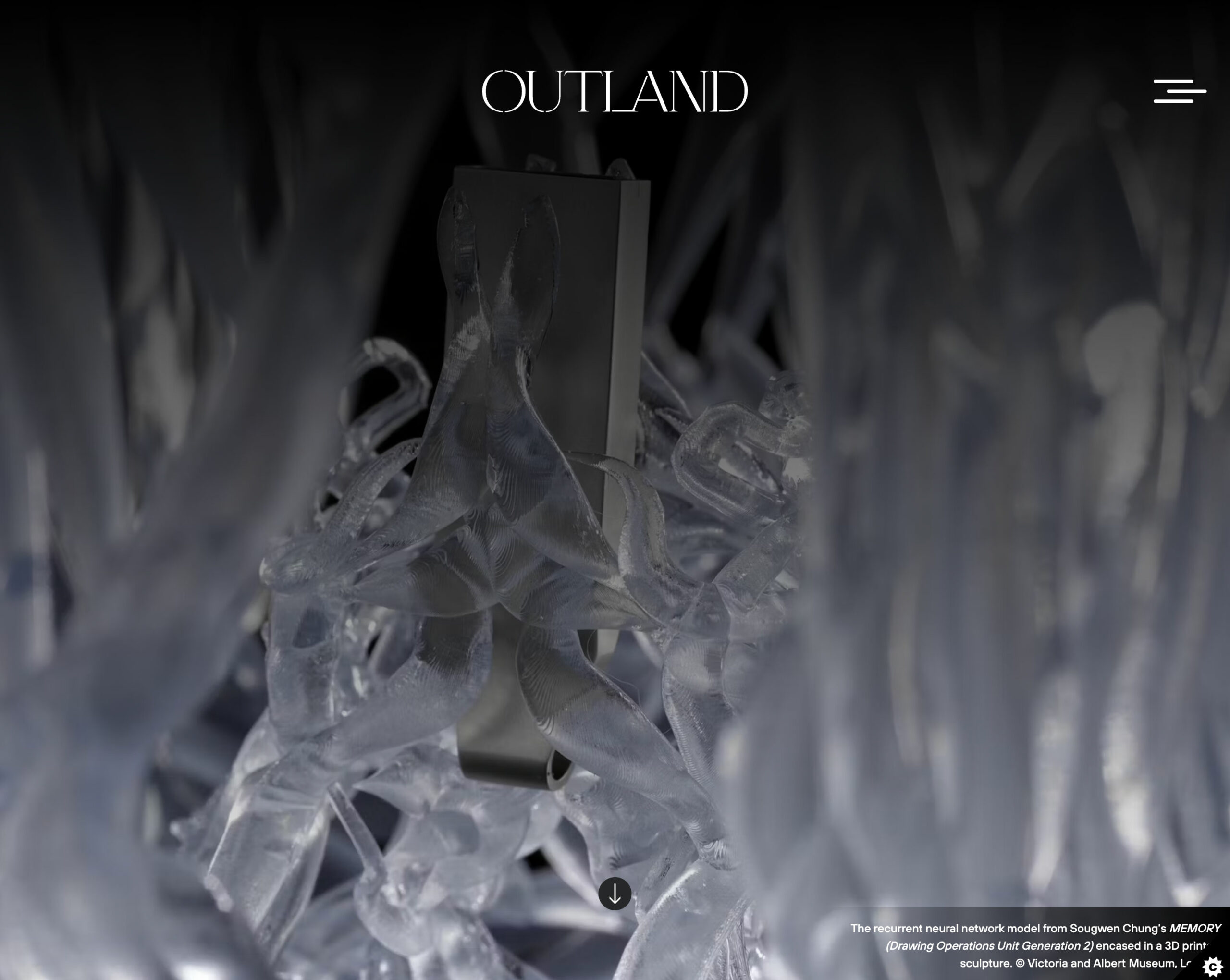Latest in: Press
💙 Grateful to the whole team at @TIME for the #TIME100 Impact Award, recognizing individuals who have gone above and beyond to move their industries—and the world—forward in the AI space. I am honored to be one of …
Chung, Sougwen. “Where Does A.I. End and We Begin?” The New York Times, The New York Times, 7 Dec. 2023, www.nytimes.com/2023/12/07/special-series/artificial-intelligence-art.html?unlocked_article_code=1.EE0.eiMW.j35PQKm8GJih&smid=url-share. Where does A.I. end and we begin? I’ve been thinking about this question …
Veena McCoole Sougwen Chung Study 24 , 2023HOFA Gallery (House of Fine Art) Price on request Since the COVID-19 lockdowns accelerated the art market’s transition to remote sales, collectors have warmed to tools like augmented …
Since 2015, artist Sougwen Chung has pioneered the use of AI and robotics in their work, producing a series of artworks built on the principle of “human-machine collaboration.” A new exhibition at London’s House …
HOFA Gallery, London MAYFAIR | LONDON | UK OCT 14, 2023 - OCT 25, 2023 The Chinese-Canadian artist and artistic director of London-based studio, Scilicet, is renowned for their visionary and speculative practice exploring …
DIGITAL ART, FROM THE PRESENT, FOR THE FUTURET he 0xCollection (pronounced “Hex Collection”), an initiative of new media and time-based art by contemporary artists at the forefront of innovation, premiers its international exhibition programme …
Singapore International Festival of Arts (Sifa)Realm Of SilkSougwen ChungVictoria TheatreSaturday (May 20) With artificial intelligence (AI) sending waves of upheavals in the art world, it is apt that this year’s Sifa – positioning itself …
Veena McCoole Sougwen Chung Study 24 , 2023HOFA Gallery (House of Fine Art) Price on request Since the COVID-19 lockdowns accelerated the art market’s transition to remote sales, collectors have warmed to tools like augmented …
Assembly Lines by Sougwen Chung was exhibited at EMMA Museum in Espoo, Finland from 27 August 2022 and 15 January 2023. Read the article here.
In an in-depth article and interview with the V&A Museum's digital art curator Pita Arreola, the topic of collecting contemporary digital art is discussed, with the recent acquisition of Sougwen Chung's work MEMORY, serving …
